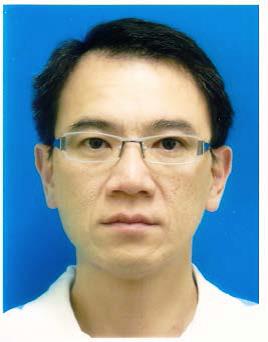November 20th, 2017: Semiconductor Nanowires for Optoelectronic and Energy Applications
TALK: Semiconductor Nanowires for Optoelectronic and Energy Applications
Co-sponsor: IEEE Photonics Society

SPEAKER:
Professor Hoe Tan
Department of Electronic Materials Engineering, Research School of Physics and Engineering
The Australian National University
Monday, November 20, 2017 11:30 AM – 1:00 PM
Texas Instruments (TI) Auditorium E-1
2900 Semiconductor Drive
Santa Clara, CA map
Cost $6, discount for IEEE Members, Students & Unemployed. Please register here.
ABSTRACT:
The excitement of nanowire research is due to the unique electronic and optical properties of these nanostructures. Both axial and radial heterostructure nanowires have been proposed as nano-building blocks for the next generation devices, which are expected to revolutionise our technological world. Unique properties stem from nanowires’ large surface area-to-volume ratio, very high aspect ratio, and carrier and photon confinement in two dimensions. These nanowires are usually grown by the so-called vapor-liquid-solid mechanism, which relies on a metal nanoparticle to catalyze and seed the growth. An alternative technique to grow the nanowires is by selective area growth technique, where a dielectric mask is first patterned on the substrate prior to growth.

In this talk, I will present an overview of compound semiconductor nanowire research activities at The Australian National University. The optical and structural properties of binary and ternary III-V nanowires including GaAs, InGaAs, InP and GaAsSb nanowires grown by metal-organic vapour phase epitaxy will be presented. Various issues such as tapering of the nanowires, compositional non-uniformity along nanowires, crystal structure, carrier lifetime and polarization effect will be discussed.

I will also present our results of III-V nanowires grown on Si substrates which are of great interests for the integration of nano-optoelectronic devices on Si platforms. Our results of enhancing the quantum efficiency of nanowires by using plasmonics are promising to improve the performance of nanowire devices.

Finally, the results from our nanowire lasers, photodetectors, solar cells and photoelectrodes for water splitting will be presented.
SPEAKER BIOGRAPHY:
Prof. Tan is currently the Head of the Department of Electronic Materials Engineering at the Research School of Physics and Engineering, The Australian National University. Tan received his B.E. (Hons) in Electrical Engineering from the University of Melbourne in 1992, after which he worked with Osram in Malaysia as a quality assurance engineer. In 1997, he was awarded the PhD degree from the Australian National University for his dissertation on “Ion beam effects in GaAs-AlGaAs materials and devices”. He is a past recipient of the Australian Research Council Postdoctoral, QEII and Future Fellowships. He has published/co-published over 350 journal papers, including four book chapters. He is also a co-inventor in 4 US patents related to laser diodes and infrared photodetectors. His research interests include epitaxial growth of low-dimensional compound semiconductors, nanostructured optoelectronic devices and ion-implantation processing of compound semiconductors for optoelectronic device applications. Prof. Tan is a Senior Member of the IEEE and is the Distinguished Lecturer for IEEE Nanotechnology Council (2016) and IEEE Photonics Society (2016-2017).
- 11:30 am – Registration & light lunch (pizza & drinks)
- Noon – Presentation & Questions/Answers
- 1:00 pm – Adjournment
